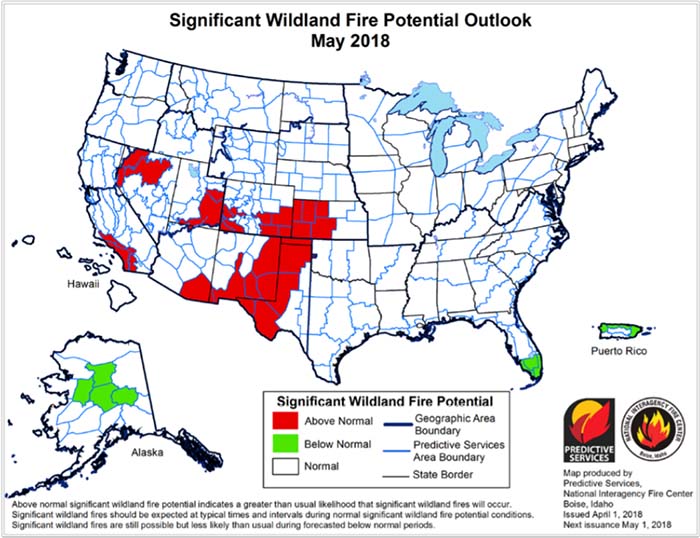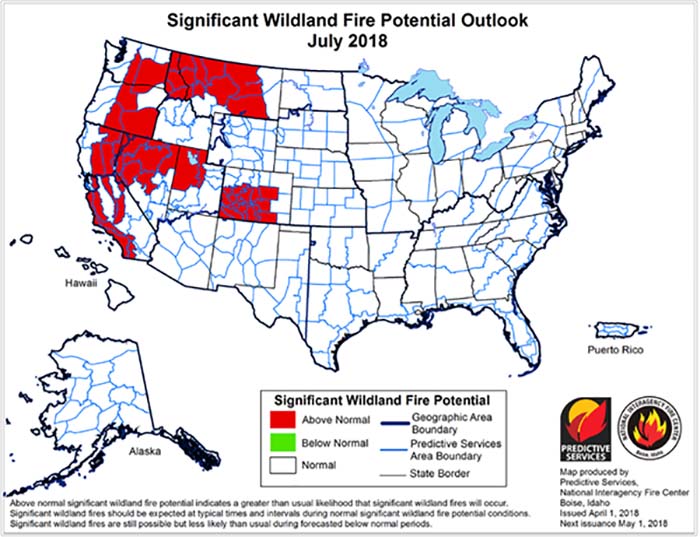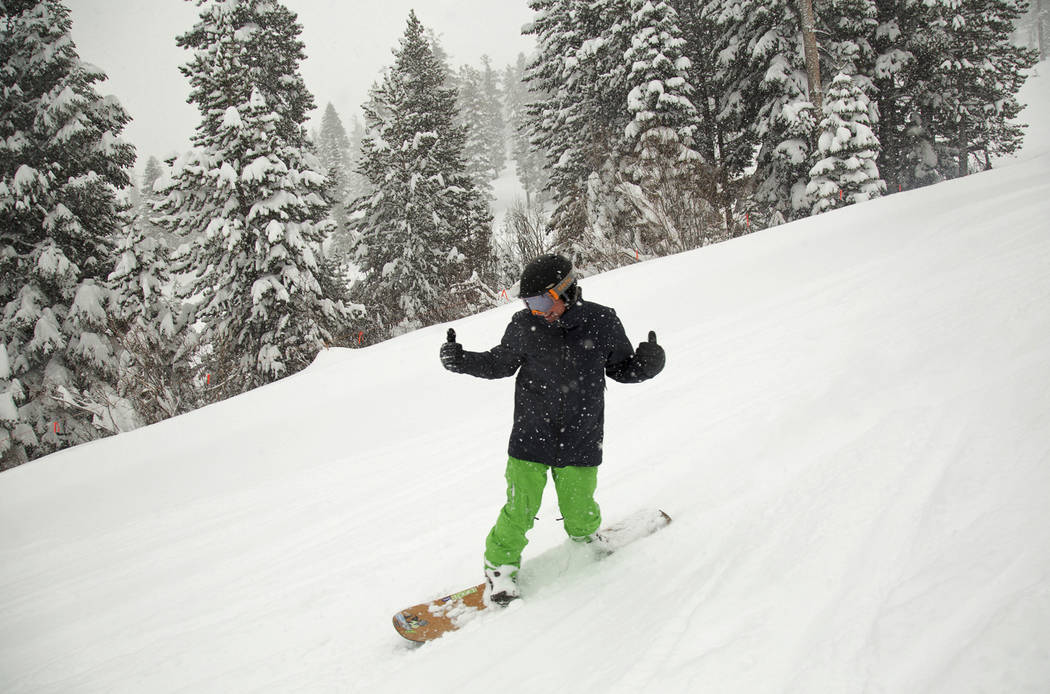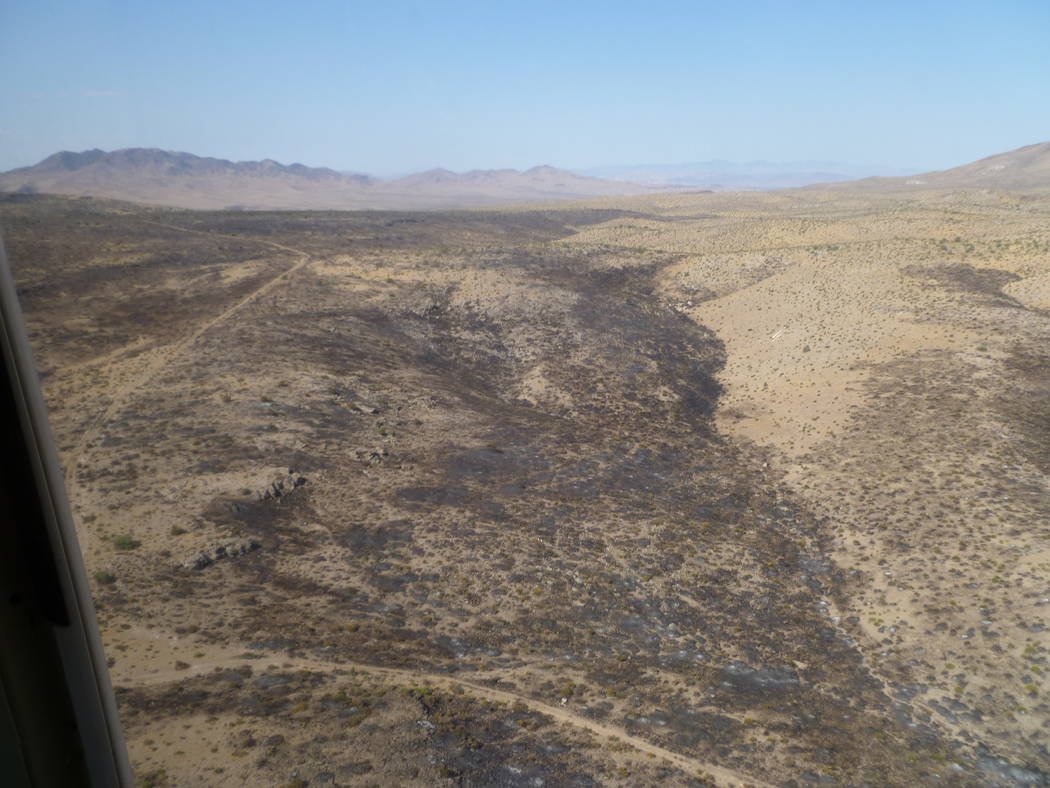Late snow could mean disaster during Nevada fire season
After a sluggish winter, Miracle March was a dream come true for skiers and snowboarders in Northern Nevada.
But that late season surge in precipitation could cause nightmares for firefighters and officials in Nevada who are prepping for another potentially historic year of wildfires across the state.
“I hate to use the ‘term worst-case scenario,’ but it’s kind of leading into another potentially very active fire season,” said Chris Smallcomb, warning coordination meteorologist with the National Weather Service.
Smallcomb was one of several presenters at a briefing Wednesday for Gov. Brian Sandoval, where wildfire prevention and firefighting officials from across the state laid out risks ahead, what’s been done to try and mitigate the impacts and where the state’s readiness stands come peak wildfire season.

(Gov. Brian Sandoval's office)
In 2017, 1.3 million acres burned in Nevada from wildfires, marking the third-worst wildfire season in recorded history.
And 2018 is off to a hotter start, with 40 fires coming in the first two months of the year, said state Forester Kacey KC. All 40 of those fires, she added, were started by humans.
“Last year, we didn’t even hit fire season until about June,” KC said.
It’s difficult to predict just how many acres will burn this year, but with the late snowfall and lack of overall snowpack, KC said that “conditions are aligning to have a lot of natural-cause fires.”
Northern Nevada in particular is predicted to be one of most at-risk areas in the country for for wildfires from May through July, according to KC’s presentation.
Late winter bring higher risk
Through Feb. 28, the snowpack for Tahoe and the eastern Sierra Nevada range was at 36 percent of normal, Smallcomb said.
But March brought near-record amounts of precipitation across much of Northern Nevada. And by March 27, snowpack in Tahoe and the eastern Sierras had jumped to 85 percent, Smallcomb said.
And while moisture going back into the ground is most always a good thing, late precipitation carries serious wildfire risks.

(Gov. Brian Sandoval's office)
Had the snow come when temperatures were cooler, the snow would have been able to freeze, KC said. That would have allowed for a slower release of water into the ground throughout late winter and early spring. But late snow melts before it can compact last year’s grassy growths, KC added, and brings about even more new grass that turn into wildfire fuel.
“It actually just compounds the issue that’s already out there,” KC said.
The meeting also highlighted some of the ways Nevada officials hope to battle fires, including an ever-growing system of cameras stationed atop mountain peaks across the state, which officials hope can reduce firefighter response time by 30 to 60 minutes.
Sandoval said after the meeting that he always prepares for the worst, but with the cooperation of local and federal agencies, properly trained personnel and funding for the proper equipment and vehicles, he’s confident the state is ready to handle whatever Mother Nature fires at Nevada this year.
“Regardless of the fire event, we’ll be prepared,” he said.
Contact Colton Lochhead at clochhead@reviewjournal.com or 775-461-3820. Follow @ColtonLochhead on Twitter.
























